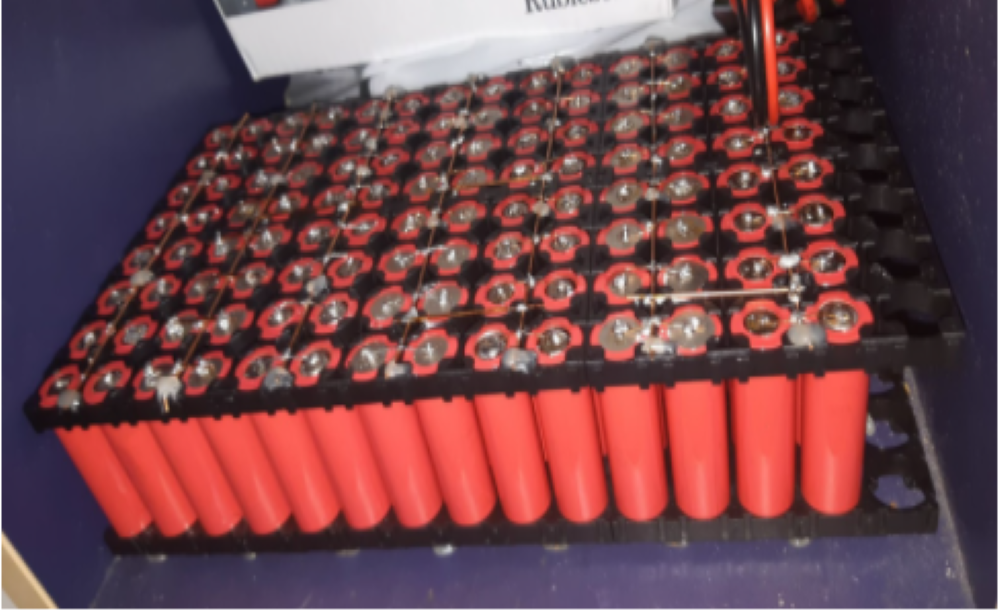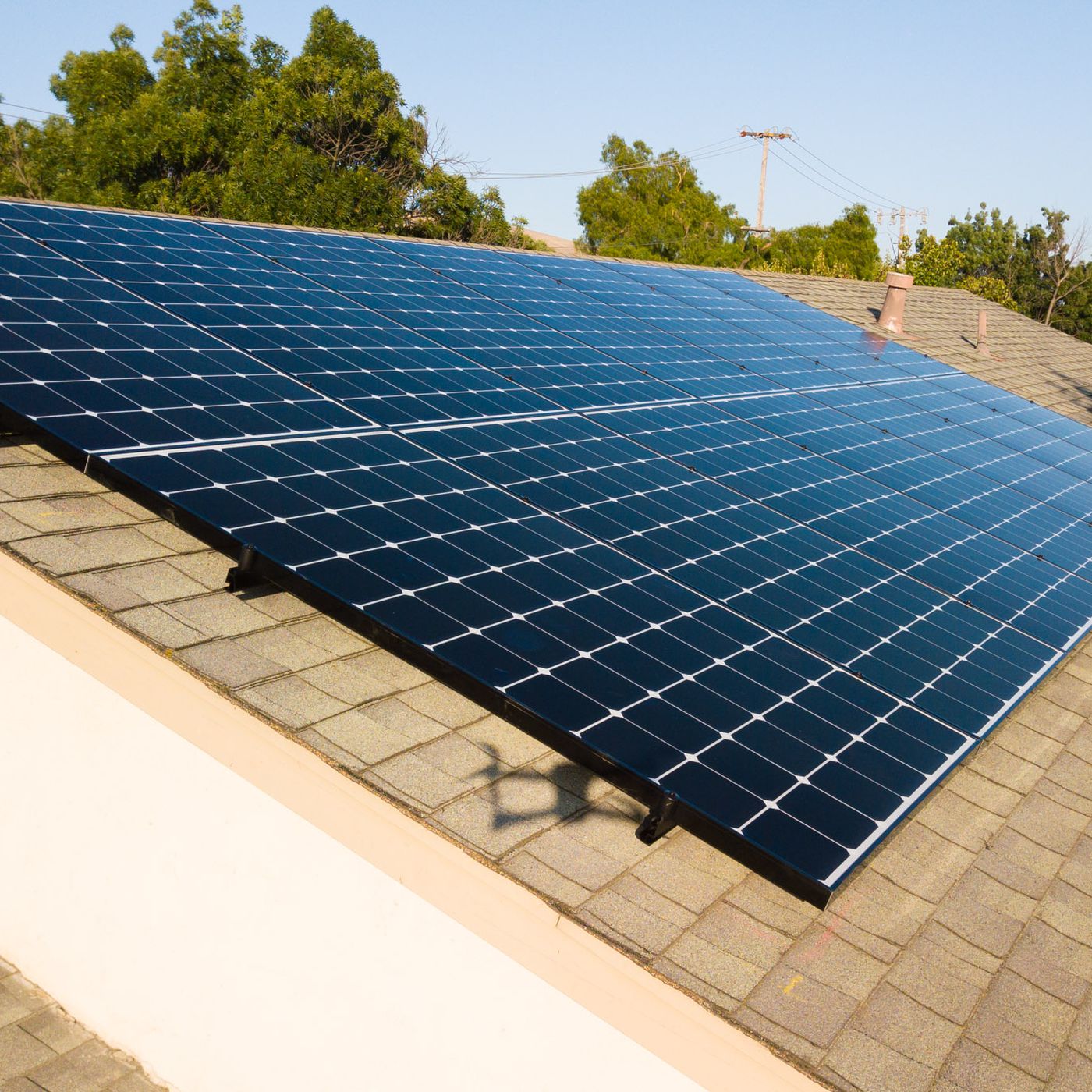Battries
The batteries used are so-called 18650 batteries, which Kjell & Company (2018-04) mention that they are batteries with a minimum of 3.7 and a maximum of 4.2 V (voltage) and are known due to their high capacity which can be between 2300 and 3600 mAh (milliamp hour) depending on the model of the battery used and at the same time they have low weight. The solar generator that was built consists of 112 of these batteries that are connected in both parallel and series connection, which according to the website Tystor means that when batteries are connected in parallel, it is not the voltage that gets higher but it provides energy for a longer time, while in a series connection is the opposite with higher voltage and lower time of energy. First, the batteries were divided into 7 parts with 16 batteries and which are connected in parallel. Then all 7 parts were connected in series. All these batteries were charged before they were connected and therefore they had 4.2 V voltage, which means that the whole battery pack is 4.2 * 7 = 29.4 V voltage. The capacitance of the batteries used was around 2300 mAh and since only 16 batteries were connected in parallel, the capacitance will therefore be 2300 * 16 = 36800 mAh or 36.8 Ah.

Charging
A solar generator can supply many large and powerful things with power, but eventually the power will run out and then it will be necessary to charge it. Solar generator is charged with the help of solar panels and for that a solar regulator is needed, Sunwind claims that it has as its most important task to charge the battery safely and efficiently without overcharging. But it is also possible to charge the battery by connecting it to a standard wall socket. To calculate how long it would take to fully charge this solar generator using standard wall sockets, you need the information that Ljudteknikern.se (2018) has shared in its article. A standard wall socket is usually fused with 10 amps and has 230 in voltage and according to the formula P (watts) = U (voltage) * I (amps), the number of watts a standard wall socket provides is 10 * 230 = 2 300 W. And the battery used in this laboratory has 29.4 Voch 36.8 Ahoch therefore the number of watts becomes approximately 29.4 * 36.8 = 1,082 W. Then the number of watts the battery needs to be filled with the number of watts a wall socket can supply, then it becomes about 1082/2300 = 0.47 hours, which is about half an hour. Provided that there are no losses in the charge. Then it can be calculated that it takes 30 minutes to fully charge the battery used during the laboratory with the help of a standard wall socket. Thus, it is the same when charging with the help of solar panels, except that it is necessary to calculate how much watts the panels produce.

Security
Most important of all, security is needed and this is done by having a switch and a screen that shows everything that is going on in the system such as; voltage, capacitance and temperature. A simple single-pole switch was used for the switch, as the website Kjell & Company (2018-05) claims that it is a simple switch with only two connections where it is only necessary to connect one cord and then remove the same cord on one side. It can handle a current voltage of no more than 60 V, which is more than enough for the battery. The screen used is a DC energy meter screen and it also has bluetooth, which means that it is possible to connect it with an app in the mobile to keep track of everything that is going on with the solar generator from the mobile.